By Brian Alm. Published on Egyptological, Magazine Edition 2, September 9th 2011
Introduction
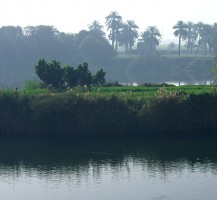
Figure 1. With the Creation, order replaced chaos and the first dry land, the “Primeval Mound,” arose from the primordial water. This thought proceeded from the Egyptians’ observation of nature: when the annual flood receded, mounds of earth appeared and plants sprang up. This cyclical event became a metaphor for new life and renewal, and therefore resurrection.
In Part 1 of this series I presented three guiding ideas of Egyptian religion: order (maat), duality (polarity, balance), and magic (heka). In this part I speculate briefly on how it all began and then we will see how the ancient Egyptians explained cosmogony (the creation of the universe) and deified the principles of Creation [Figure 1] and order on Earth.
But first, a confessional note seems called for. In this series I am compressing Egyptian religion, homogenizing beliefs and practices as if they were uniform throughout the 3,000 years of pharaonic history. That might horrify most historians, but for ancient Egypt it’s not so unreasonable. We could pick at details endlessly, but the basic religion and its supporting mythology — whose roots go back to long before 3,000 BCE — were in a pretty mature state when they first appeared in writing, in the Old Kingdom, and — given the Egyptians’ conservative reverence for the past — the basic, early expressions of religion were never superseded. When new myths, beliefs and practices came along they were added to the existing body of thought. There was no exclusionary, dogmatic canon; new contributions to the belief system were welcome. “Because Egyptian religion was not founded on divine revelation or prophetic tradition, there was no codified doctrine, no canonical text” (Traunecker 2001, p. 5). Consequently, without any need to attack or defend itself from competing faiths, the religion grew by accretion and inclusion.
Religion Takes Root
The earliest people in Egypt were nomadic gatherers and herders who eventually settled in the Nile Valley and the western oases, and, sometime around 5500 BCE, took up agriculture. That necessitated staying in place instead of wandering, and so communities developed, along with some early form of civil order. Now, with people in place, ideas were communicated — including ideas about the divine, drawn from observation of nature and the world around them: the vast vault of the night sky, and under it the fertile valley, with its flowing river of life, and the deadly desert beyond. We saw that duality of order and chaos in Part 1.
Their experience with livestock, particularly cows, and their observation of animals — among them birds, beetles, crocodiles, jackals, scorpions and snakes — led to rudimentary expressions of religion. One of the very earliest artefacts depicts a cow framed in stars. The cow will one day come to be a characterization of Hathor, offerings of milk will please the gods and anoint the way of the dead in the funeral procession, and the stars will be the souls of the blessed dead, risen to Eternity. Those other animals also will assume divine associations and identities, the first and foremost of which is the celestial falcon, Horus.
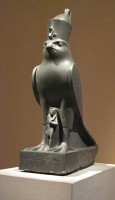
Figure 2. All kings claimed direct descendency from Horus and took “Horus” and “Golden Horus” names — three of the five names in their titulary. Here Horus, in the sekhemty double crown of Upper and Lower Egypt, bestows his divine protection on the king.
This Horus, often called Horus the Elder, was observed soaring majestically in the heavens as a falcon, or hawk, and was deified as a solar god [Figure 2]. Later on there will be another Horus, the son of Osiris and Isis, and over time these two Horuses will assume a blended identity. The distinction between them can be blurry, especially since they’re both depicted as falcons and wear the sekhemty double crown of Upper and Lower Egypt, but distinctions between Egyptian deities are often blurry, and that doesn’t actually matter much: sharing identities and aspects expands the concept of the deity. The younger Horus, born of Isis, puts flesh and bone on the celestial Horus, so myth comes to the aid of human understanding.
Osiris, too, appears to spring from these times. Nearly 3,000 years later, when he becomes the god of the afterlife, he holds his trademark crook and flail as emblems of his prehistoric career as a fertility god who became a god of herding and agriculture, and he is depicted with a green or black face as a symbol of the fertile soil. (A popular personal item in the New Kingdom was the “Osiris bed,” a little planter shaped like the supine Osiris, which drew upon his magic to germinate grain.) It is no stretch to imagine how such thoughts and associations from earliest times led to a concept of resurrection and eternal life.
Communities identified local gods as objects of worship, and as the communities grew both in size and number, and perhaps as more explanations of the mysteries were called for, the pantheon grew, along with an expanding corpus of myth to put the mysteries in understandable terms. Eventually, as Lucia Gahlin says in her excellent overview, Gods, Rites, Rituals and Religion of Ancient Egypt, “It is likely that the priesthood formulated and developed the various theological ideas associated with the gods and goddesses,” (p. 19) and also, “When Egypt was unified under a succession of pharaohs, many local gods were admitted into the national pantheon, giving rise to a vast number of deities and a complex system of belief and ritual” (p. 6).
Now let’s leap over the next 3,000 years and see how thoughts have developed.
The Four Centers of Theology
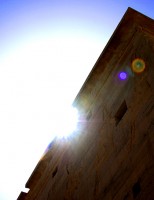
Figure 3. The sun at its zenith. The sun had various aspects: at sunrise it was Khepri, “he who becomes,” at its zenith Ra, and at sunset Atum. The sun god Ra was first attested at the time of Raneb (Ra is Lord), 2nd Dynasty.
Through the course of time, there were four major centers of theology in ancient Egypt, each with its own Creation story (or stories) and emphasized deity (or deities). All four contributed their own ways of looking at things. The temptation, or urge, for us modern, linear thinkers, is to construct a historical progression in order to follow the development of religion and see which theology was “in” or regarded as “true” at various points in time. But the Egyptians did not reject diverse ideas and interpretations, despite what we would call contradictions or conflicts; they accepted all of them and absorbed them, so the religion was a cumulative result of addition and assimilation over time. There was no problem of contradiction or conflict from competing theologies, because they were not in competition — various ideas were all valid.
That said, various schools of thought did indeed develop in different places at different times. The earliest was Heliopolis (Iunu, called On in the Bible), just northeast of modern Cairo. By the 25th century BCE, the theology of Heliopolis was no doubt common knowledge. Hermopolis, in Middle Egypt, came next, and then Memphis, just south of Cairo. The theology of Memphis may have existed for some time, but it wasn’t written down until the 19th Dynasty. The theology of Thebes (modern Luxor, at the Qena Bend in Upper Egypt) came in with the New Kingdom. Soon thereafter the worship of Amun became dominant throughout Egypt.
The explanation of how the universe began and the world was created (cosmogony) was the starting point for each of these theologies. Because such a thing was clearly beyond human capability, obviously it had to have been done by a supreme being, and so in each Creation story, there is a creator god who caused order to prevail over chaos. It all begins with the theology of Heliopolis, and so shall we.
Heliopolis (Iunu), Ra and The Ennead
In the beginning, before humankind, there was only the primordial ocean, Nun, which completely filled the universe. The waters of Nun were motionless, silent and dark; it was nothingness, infinity, the chaos before Creation.
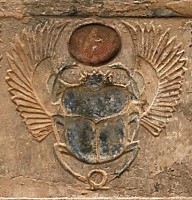
Figure 4. The winged scarab (kheper) with solar disk (Ra) clutches the shen symbol (shenu, "round"), indicating endlessness.
When the annual flood receded, mounds of earth appeared and plants sprang up. This event of nature became a metaphor for new life and renewal, and so the Egyptians conceived of the beginning of the world as an emergence of land from water. This first dry land, the “Primeval Mound,” arose from the primordial water of Nun [Figure 1]. And on this mound a lotus (water lily) grew. The lotus folds up at night and unfolds in the morning, so it became a symbol of rebirth. The blossoming of the lotus was converted to mythology: when it opened, the sun god Ra emerged and light was born.
The sun had various aspects. At sunrise it was Khepri, “he who becomes.” Kheper, the scarab beetle, was regarded as a symbol of rebirth because the baby beetles emerged from a ball of dung that the beetle pushed ahead of itself. The ball of dung was round and looked like the sun, and a round ball became the symbol for Ra [Figure 4]. At its zenith the sun was Ra and at sunset it was Atum [Figure 3].
Incidentally, the Egyptians observed that in the morning, baboons faced the rising sun and raised their paws toward it. The baboons were only warming themselves, but to the Egyptians it looked like they were doing homage to Khepri, so in the Egyptian language there is a glyph that shows a man with his arms raised in praise, like the baboons. This is one of the many signs called determinatives, which are used as a clue to the meaning of a preceding word; in this case, praise or adoration.

Figure 5. The first glimmer of light that precedes the dawn was akhet, the word for “horizon,” and also the name of the first season of the year, the Inundation, when the life-giving flood precedes the re-emergence of the crops. Akhet means “the place of becoming effective.”
The ancient Egyptians called the glimmer of first light that precedes the dawn, akhet [Figure 5]. Akhet is one of the most interesting words in the Egyptian culture. It’s the word for “horizon,” but it’s also the name of the first season of the year, the Inundation, when the life-giving flood precedes the re-emergence of the crops. Akhet means “the place of becoming effective,” so it’s a very good word, especially when we consider the deeper meaning of “horizon.” The Eastern Horizon, where the sun begins its daily journey, was known as the Field of Iaru (or Field of Reeds), “the place of purification.” The Western Horizon was the Field of Hotep, “the place of contentment.” “Hotep” also means “pleased” or “satisfied,” as in Amenhotep (“Amun is satisfied”) and for “offering.” And in a pyramid, there is the akhet chamber from which the soul of the king rises to the heavens, to join the “Imperishable Ones,” the circumpolar stars, which never set. In each case, the message is resurrection.
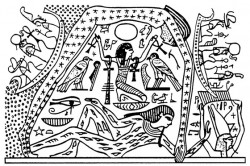
Figure 6. Geb and Nut were the personified deities of Earth and the sky, and the parents of Osiris and his siblings Isis, Nephthys and Seth. Here Nut (supported by Heka) arches over the reclining Geb. The parents of Nut and Geb were Shu (dry air) and Tefnut (moisture). These four were principles of nature. Together with Atum, this family of deities makes up the Ennead, "The Nine."
In another version of the Creation story that also arose in Heliopolis, the creator god was called Atum (The All, The One), the formless spirit who created himself out of nothing and then created the first siblings, the god Shu (dry air) and the goddess Tefnut (moisture), who in turn gave birth to Geb and Nut (Earth and sky) [Figure 6]. These pairings (dualities) eventually led to deities who were more imaginably “human”: a family of deities — Osiris and his three siblings, Isis (Iset), Nephthys (Nebthet) and Seth — who could procreate, like we can, and could be explained by mythology that was understandable in human terms. These deities were not “He who becomes” or “He who created himself” or “The Unseen” or “Air” or even “Earth,” but brothers and sisters, husbands and wives. Egypt now had a First Family.
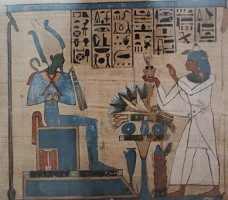
Figure 7. The rise of the Osirian religion was a major development: Eternity would become available to all people. Osiris was much beloved because of his endearing qualities and human experience — kindly and good husband, father of Horus, and the innocent victim of treachery — and most of all because he offered a life beyond this one. Photo by Andrea Byrnes
That is one of two very crucial things that were happening at this point. The other, and the most important development in Egyptian religion, is the ascendency of Osiris (Usir) [Figure 7] as the god of the dead in Eternity. The Egyptians were now recognizing a quasi-physical Afterlife beyond this one — not just a spiritual continuation among the stars — at least for the king, and later on for all Egyptians, and this point cannot be emphasized too strongly. The Osirian religion and the “chthonic” deities — those associated with the Netherworld, or “Otherworld,” where the blessed dead live in Eternity — will remain central in the Egyptian mind, along with the “solar” pantheon of abstract principles, for the rest of ancient Egyptian history.
It was not just the promise of eternal life that made Osirian religion so compelling. It was also the appeal of these family relationships and the stories that put religion in human terms: myths — part theology, part soap opera. For example, Osiris impregnated his wife/sister Isis and that union produced Horus the Younger. Unlike the predynastic solar Horus, this Horus was born as a little baby, innocent and vulnerable, just like human babies. As Osirian religion progressed, it brought the conception of the divine down to Earth.
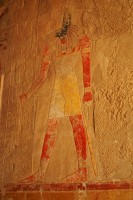
Figure 8. Anubis became the god of embalming when he helped Isis resurrect Osiris. Anubis will later take responsibility for the Weighing of the Soul.
Continuing in the family tradition, Nephthys and Seth married but had no child together, so Nephthys managed to get her brother Osiris to impregnate her, by first getting him drunk, the result of which was Anubis (Anpu), who became the god of embalming and supervised the Weighing of the Heart in the Court of Osiris [Figure 8].
The Heliopolitan pantheon now included Atum, Shu, Tefnut, Geb, Nut, Osiris, Isis, Nephthys and Seth, known in Greek as the Ennead — “The Nine.” Three is plural, so 3 x 3 = 9, the “plural of plurals,” “the all.” Many more deities will come into the picture, but this first pantheon will always remain in place.
Hermopolis (Khemennu), The Ogdoad and Thoth (Djehuty)
In Hermopolis, the pantheon consisted of eight gods: the Ogdoad. But that’s if you count the female counterparts, who were simply feminine forms of the masculine gods Nun, Heh, Kuk and Amun. Unlike the very human deities that had evolved in Heliopolis, these gods represented four primordial principles, expressed as binaries, or dualities, by giving them doubles with feminine endings.
As in Heliopolis, Nun was the primordial water — the dark and formless void. But in Hermopolis, Nun joined with three other deified abstract principles of the primordial universe to form the group of four: Huh or Heh, endlessness, infinity (“Heh” literally means “million” but it’s used to indicate “infinite” — “I can’t count any higher”); Kuk, darkness, the absence of light; and Amun, that which is unseen (air).
Before Creation, these principles were dormant in the silent void, infinite and dark. An active force was needed to stir them into being and create order. Amun, the prime mover, was the divine wind that stirred the waters and prevailed over darkness and endlessness, resulting in Creation. We’re going to see Amun again when we get to Thebes, but that will be a more anthropomorphized Amun, syncretized with Ra.

Figure 9. A Creation story in Hermopolis holds that an egg was laid on the Primeval Mound by an ibis bird, the god Thoth, who broke the silence of chaos with the sound of his voice.
It has always amazed me to see how verbose and redundant the Egyptians were. If you were chiseling hieroglyphs on a stone wall or obelisk, wouldn’t you want to keep it short? But no, the Egyptians were rarely terse and never satisfied with one version of a story. In Hermopolis, there were three other versions of Creation. In the first version, the lotus flower opened and inside was the divine child, Ra; this version was a retake of one of the stories in Heliopolis, of course. In the second version, the silence of the cosmos was broken when a great Celestial Goose laid an egg on the Primeval Mound. Inside the egg was the Bird of Light, Ra, who then created the world (never mind the contradictory timing). In the third version, the egg was laid by an ibis bird (jabiru), who was actually the god Thoth (Djehuty) [Figure 9], who broke the silence of chaos with his divine Divine Utterance (Hu). That brings us to the Memphis story.
Memphis (Men-nefer, Hut-ka-Ptah); Sia – Hu and Ptah
The Memphite cosmogony was founded in duality: the paired principles of Potential and Realization, called Sia and Hu. Sia was divine perception or intelligence, the potential for being but not yet realized. Hu was the Divine Utterance, the power to command — realization, the active principle that made order out of chaos. Putting it more simply, Sia was mind (heart) and Hu was tongue.
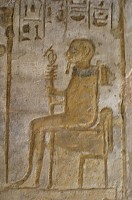
Figure 10. The creator god in Memphis was Ptah, who, like Thoth in Hermopolis, created the universe with the sound of his voice; he “broke the silence.” Ptah was the god of craftsmen, artisans and sculptors, and also created the ethical order of things, as the god of truth. Photo by Andrea Byrnes
Let’s take this down a peg. Picture a craftsman or artist at work. He imagines the finished project and then takes up tools to create it. But it starts in the mind. “The conception of a project by forethought and its subsequent realization through intelligible expression were part of the daily life of artisans.” (Traunecker 2001, p. 79) The creator god in Memphis was Ptah [Figure 10], who had these two key aspects, the duality of mind and tongue. He created the universe with the sound of his voice; he “broke the silence.” It’s no surprise that Ptah was the god of craftsmen, artisans and sculptors. In Memphis, of course the other gods were seen as manifestations of Ptah.
Ptah also created the ethical order of things; he was, among other things, the god of truth — he was said to be “true of voice” (ma’a kheru). We see in that term, of course, the root concept: order, maat.
For the Egyptians, the primordial universe was filled with darkness and silence, so the two fundamental needs of Creation were light and sound. The light was Ra, and in both Hermopolis and Memphis it was sound that “broke the silence” — god created the universe by the sound of his voice. God spoke, and the world emerged from the silence and the darkness. In all of these theologies, the prominence of duality as a basis of order (maat) is obvious.
Thebes (Uaset, Iunu Shema) and Amun
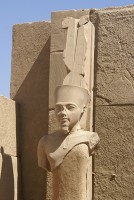
Figure 11. The major god of Thebes was Amun, who had been around since the 12th Dynasty as a local god, but in the 18th Dynasty he became the chief national god of Egypt. Amun was soon syncretized as Amun-Ra.
In Thebes, which ascended to prominence at the beginning of the New Kingdom as the chief religious center of Egypt, all the other theologies, cosmogonies and myths were again amalgamated, but Thebes elevated Amun above all and retroactively declared the other gods manifestations of Amun [Figure 11]. Amun had been around since the 12th Dynasty as a Theban local god, but now in the 18th Dynasty Amun became the chief national god of Egypt. Amun became Amun-Ra through a process called syncretism, by which deities were assimilated, combined or assumed other dieties’ roles or aspects, or shared their identities, characteristics and responsibilities. Syncretism is how the two Horuses became, over time, sort of a generic Horus.
So now, with the addition of Ra, we’re back to the beginning. Amun, “the hidden one,” was associated with air, like Shu, as an invisible, dynamic force; and, like Atum, Amun created himself out of nothing. So we might think we’re back to abstractions, without the family relationships that made the offspring of Geb and Nut so humanly understandable. But no: the Egyptians had developed several triads, trinity-like families, each with a god, goddess and male child: Osiris, Isis and Horus in Heliopolis, for example. Here in Thebes, Amun was paired with the goddess Mut, and their offspring was the god Khonsu.
Thebes (Uaset) was also called Iunu Shema, “the southern Iunu,” so with this pairing Thebes, the last of the theological centers, balanced the first, Heliopolis, and syncretized the sun god Ra as Amun-Ra. Dualities in balance are never very difficult to find in Egyptian culture.
Commonalities
All of these views of Creation have certain things in common. Before Creation there was chaos — dark, formless, silent water. The two fundamental aspects of the universe are darkness and silence. There is potential for Creation but it remains to be realized: this nothingness has to be stirred into being. A duality of two principles together yields a new reality: in Heliopolis, those principles are expressed in terms of sexual reproduction; in Hermopolis, there are four abstract (but also paired) principles waiting to be given form; in Memphis, the divine utterance of the god realizes the potential of divine intelligence. In all four there is a prime mover: Atum (He Who Created Himself) in Heliopolis; Amun (air: the Unseen), or Thoth, in Hermopolis; Ptah in Memphis; and Amun-Ra in Thebes. All of the theologies also recognize Horus as both the solar god and the progenitor of all the kings, all of whom claimed to be his direct descendent, and the supremacy of Ra is retained by syncretizing Ra as Ra-Atum, Amun-Ra and Ra-Harakhty (Ra + Horus) [Figure 12].
Ra was first attested in the 2nd Dynasty reign of Raneb, but gained traction throughout the Old Kingdom. Horus the Elder was even older, first attested in at least five kings’ names in Dynasty 0, but he was easily incorporated in the dominant solar religion, which was never superseded — it simply merged with later developments, and myths were added to explain the grafting and establish anthropomorphic connections. Even the Osiris cult, with its promise of eternal life, did not replace Ra. Ra ruled in the cosmos, and Osiris in the afterlife.
As I’ve said, what makes it all so difficult is that we want to know which idea was “the” idea, which one was “right.” We want to sort them historically and see the evolution from one theology to another, in a linear progression. The answer is, they are all “right” — they are simply different ways of seeing things.
All of these creator gods stand for order and command over natural forces — light, water, earth and air are brought under the command of the divine Word. Let’s not forget the magical power of the Word, and the divine origin of writing: medu netjer, “the words of god,” given to humankind by Thoth so people could communicate with the gods.
By extension, what the king commanded was virtually equivalent to the act of creation. As the son of Ra and the living Horus, the king represented the gods and was vested with the responsibility for order on Earth, without which cosmic order (maat) would fail. Much of this philosophical thought would have been beyond comprehension for the man on the street, but the office and person of the king, and the commoner’s own personal obligation to both, brought all that down to Earth. The social and civil order was sacrosanct.
Resurrection and Eternity
From the First Intermediate Period on, there was a belief that the virtue of the common man would be rewarded. Through most of the Old Kingdom, eternity was restricted to royalty, but toward the end of that age the so-called “democratization of the afterlife” movement took hold, propelled by the people’s desire to live on, like the king, in return for a life well lived, and, most important, encouraged by the growing cult of Osiris [Figure 13].
As we’ve seen, very early on Osiris had been a god of fertility and then agriculture; his crook and flail were for minding sheep and threshing grain, not punishment. Osiris was the ideal deity to be promoted to god of resurrection and Eternity — he himself, after all, was the first to be resurrected. And his humanity — kindly character, wholesome family man — endeared him to everyone. He was called, among many other things, “the Good Shepherd.”
But did he shove Ra aside? No, of course not, that would not be the Egyptian way. The predynastic and early Old Kingdom times are murky, but “by the time we get a fairly coherent picture of the cult of the dead we find the Osiris faith and the solar faith existing side by side.” (Mertz 2008, p. 316) As a matter of history, it actually doesn’t matter much when Osirian religion originated. The key point is that Osiris in his evolved role as the god of resurrection and the afterlife was a welcome blessing, and the truth of the resurrection he offered was confirmed by nature.
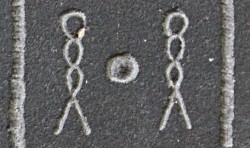
Figure 14. Neheh was cyclical eternity, which explains the daily cycle of the sun and the annual cycle of the crops, both cyclical certainties.
There was ample evidence of the ways in which natural renewal confirmed the concept of resurrection, which was then explained in myth: the daily cycle of the sun, Khepri, Ra, Atum and the return of the sun through the 12 Gates of Night (or through the body of Nut) to be reborn every morning; the celestial barque of Ra — “The Boat of Millions of Years” — that sailed through the sky and returned without fail; the annual Inundation and the return of the crops; the baby scarab beetles, which emerged from a ball of dung; the smallfry bulti fish (tilapia) that swam out of their father’s mouth, where he’d been incubating them; the water lily that folded up at night and reawakened in the morning — “coming forth by day,” one might say. (Keep that term in mind…) It was easy to process these observations into religious concepts and mythology to make order out of mystery.
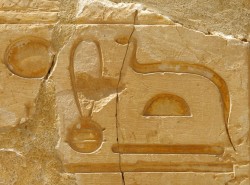
Figure 15. Djet was eternal continuity; the bar line below the cobra (dj) and half-circle (t) adds “ta”: djet-ta, “forever.” If cyclical resurrection recurs endlessly, eternity is permanent. Here it says: mi Ra djet-ta, "like Ra forever." Ra is the circle; mi, "like" is the loop.
Given the Egyptians’ love of linked dualities, it should come as no surprise that they had two kinds of eternity, neheh and djet. Neheh was cyclical eternity, recurrent regeneration, and explains the daily cycle of the sun and the annual cycle of the crops — both were cyclical certainties [Figure 14]. Why should life be any different? Resurrection was a daily event — for the sun, and for people too. Repetition, observed in nature and preserved in thought, was pervasive in the Egyptian mind. Even their writing attests to that: an alphabetic letter called “the phonetic complement” superfluously repeats a preceding hieroglyphic sign — they left nothing to chance.
Djet was continuing eternity, or eternal continuity. One inscription you see all the time is a cobra (dj) with a half-circle (t) and a bar line (ta): djet-ta, “forever” [Figure 15]. If cyclical resurrection recurs endlessly, you have permanent eternity, like an endlessly turning wheel, infinite. A circle has no beginning or end. The Egyptian shen circle, a common motif in art, comes from shenu, “round,” and means endlessness. Now, if you elongate the shen circle, you have a cartouche, the exclusive nameplate of royalty [Figure 16]. The concept of kingship is endless: the king is embraced in eternity. All these ideas and motifs are interwoven — one way of expressing something reinforces another. Cyclical eternity and eternal continuity were a duality of one truth, life.
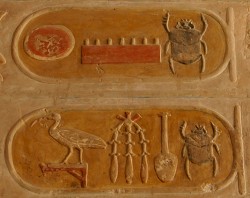
Figure 16. Elongate the shen circle and it becomes a cartouche. The concept of kingship is endless: the king is embraced in eternity. These cartouches show the nomen (birth name) and prenomen (throne name, Menkheperra) of Thutmose III.
For obvious reasons, Ra the sun was associated with neheh, but Osiris was associated with djet. A major symbol of Osiris was a pillar with four bars across it, called djed, “stability.” This symbol is often referred to as the “backbone of Osiris.”
Order on Earth required djed, “stability,” which meant Egypt and the king must have dominion (uas) over all. Life (ankh) was then linked to uas and djed, and all were part of the cosmic order (maat) [Figure 17]. This put the promise of eternity in people’s grasp: they simply had to maintain order on Earth with their allegiance to the king and respect for the social and civil order, and be able to tell about that when they came up for Judgment.
Next time we will see how the religion was practiced in temple rituals, festivals and among the common people, and how temple architecture symbolized the theology of ancient Egypt.
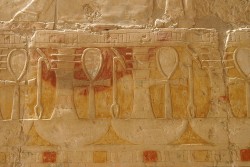
Figure 17. Life (ankh), dominion (uas) and stability (djed) over all (neb) means order (maat) on Earth and in the universe. For their part, people must help uphold order on Earth through allegiance to the king and respect for the social and civil order.
References
Gahlin, Lucia. 2010, Gods, Rites, Rituals and Religion of Ancient Egypt, Hermes House, London
Mertz, Barbara. 2008, Red Land, Black Land, William Morrow, New York
Traunecker, Claude. 2001, The Gods of Egypt, Cornell U.P., Ithaca, N.Y.
Images
All photographs by Brian Alm unless otherwise stated.
Figure 6 from The Gods of the Egyptians 1904 by E. A. Wallis Budge (1857-1937). Sourced from Wikimedia Commons.
Figures 7, 10, 12 and 14 by Andrea Byrnes
Figure 13 by Guillaume Blanchard, Gourde portant un voeu de bonne année au nom du roi Psammétique II – Antiquité égyptienne du musée du Louvre. E6204. July 2004, Fujifilm S6900. Sourced from Wikimedia Commons.
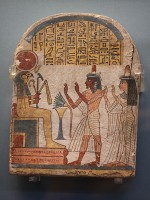
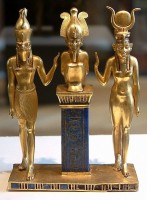
 By
By